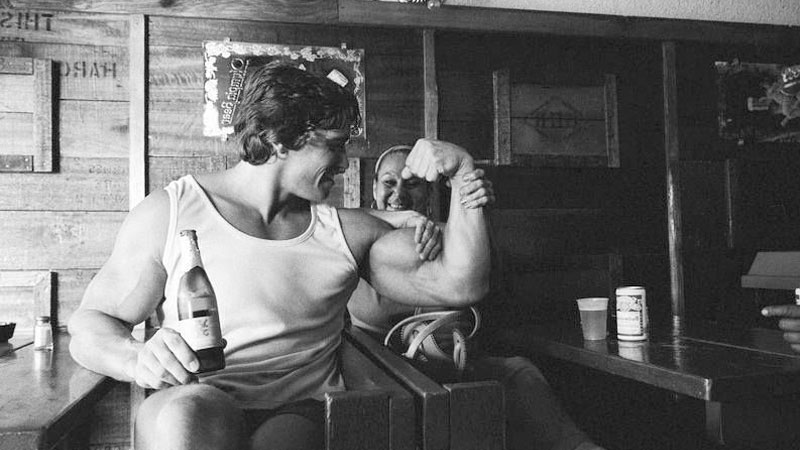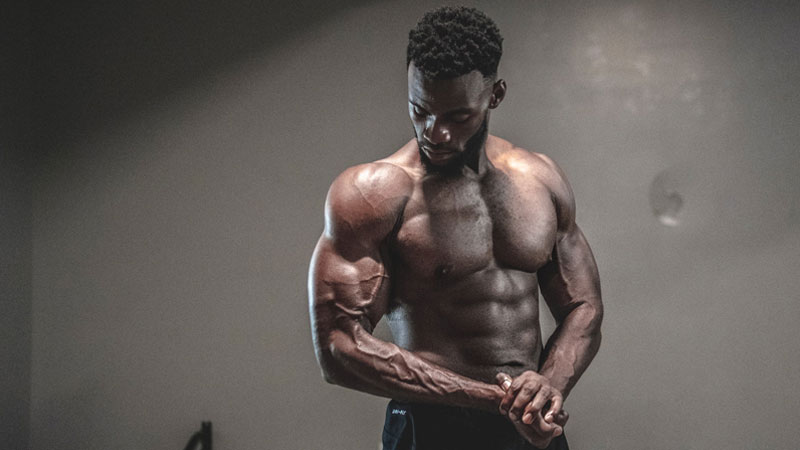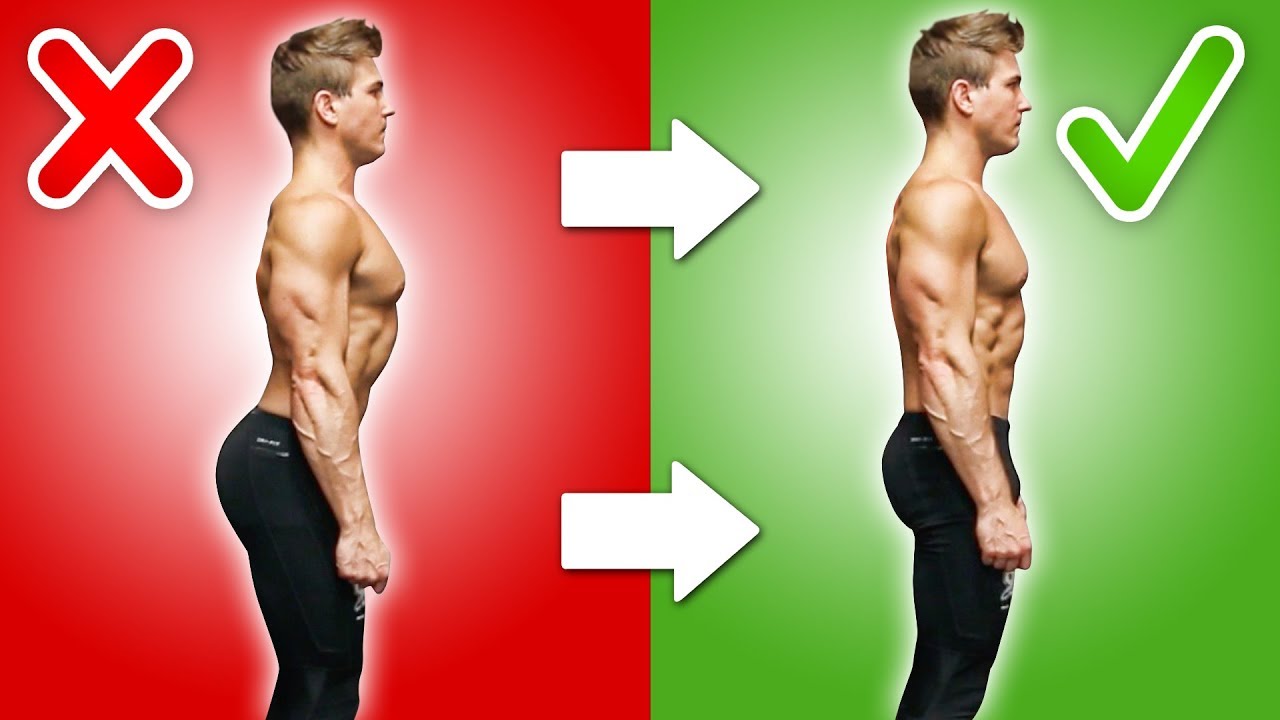
In this guide we take a look at how to fix anterior pelvic tilt. If you get back, hip or knee ache or you think you’ve got poor posture and want to improve the way you look, take a look…
Tonnes of bros have bad posture. Some have the “I train chest err day” thing going off and others have forward head posture that makes them look like they’re constantly trying to listen in on a conversation 3 kilometers away.
Anterior pelvic tilt is a condition that affects the position of the hips. It gives you the appearance of a duck with a giant ass or some thicc Insta girl doing the whole “I’mma get my butt in this shot, no matter what angle I’m at”.
But the implications of ‘APT’ are far wider than just the way you look. It can have a big effect on pain and mobility.
That’s why we came up with these best exercises and how to fix anterior pelvic tilt…
The Brodown: Article Key Points:
- Anterior pelvic tilt occurs when the hips rotate forwards and down, the rib cage tilts up and the lower back compresses in to a hollow.
- APT is associated with a higher risk of lower back, hip and knee pain and is caused by tight hip flexors and weak glutes
- There are a number of symptoms of APT such as protruding abs, hollow lower back and feet pointing out like a duck
- If you want to know how to fix anterior pelvic tilt you need the right exercises
What Is Anterior Pelvic Tilt?
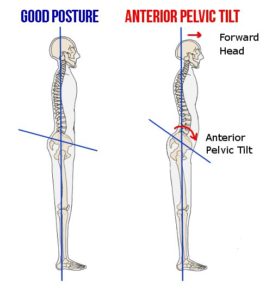
We all know what good posture looks like. You’re stood up tall, eyes forward and shoulders parallel with the floor. Your ankles are directly under your feet and the segmental position of your limbs means you’ve got balance with minimal muscle contribution.
This kind of good posture is called neutral position and refers to a perfectly ‘stacked’ position of all major limbs and joints. If you placed a plum-line down the center it’ll pass through all major locomotive joints.
When you have an aligned posture, your mass is distributed evenly, in a straight line through the vertebrae of your spine. This is considered to be the least mechanically stressful position to be in and is linked to low rates of joint, muscle and mechanical pain.
We all understand what poor posture is too. It’s anything that deviates from this anatomically ‘perfect’ position. Distortions like these are associated with a number of issues, with lower back pain being the most prevalent.
Defining APT…
Anterior pelvic tilt (APT) is a condition where your natural, resting posture deviates from what’s considered ‘normal’. Your pelvis tips forward and down, displacing the position of your thigh bones relative to the rest of your body.
Statistics suggest that as many as 85% of men show symptoms of APT. It can be a genetic issue for a small number of people, but mostly it’s related to poor lifestyle choices:
Why’s it called ‘anterior’ pelvic tilt?

The term anterior means ‘nearer the front’. For example, your pecs are on the anterior of your upper body and the bicep lies anterior to the triceps because they are at the front.
It’s the exact opposite of ‘posterior’, which refer to the back of the body.
Many bros get mixed up with the position of the hips and the term anterior. Although the butt moves back and might seem like the term posterior would be most appropriate, it actually moves more anterior.
Imagine the pelvis as a protein shaker full of liquid gains. If you tipped the top of the shaker forward slightly, the center of mass changes and the liquid inside would move up and forward. It’s the exact same thing for APT.
Symptoms of anterior pelvic tile – what to look out for
- You have a large hollow in your lower back
- Your glutes stick out like a PAWG
- The front of your pelvis is lower than the back
- Your belly protrudes even though you aren’t fat
- Knee and hip pain are a regular issue
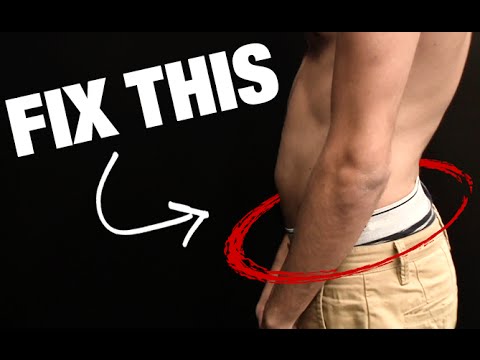
There are a number of tests that a physio or other health professional can administer to diagnose APT. These are mostly tests of range of motion to assess which muscles are tight and which are long or weak.
There’s often said to be a link between APT and lower back pain. Some studies have found that postural awareness and correcting APT leads to reduced lower back pain… but this isn’t always the case and some scientists have questioned the idea.
What causes anterior pelvic tilt?
The actual cause of APT is complex and can be different from person to person. Ultimately, the idea of a ‘perfect posture’ is questionable as we all have different proportions, bone structures, and genetics.
It’s impossible to think that everyone would be the same.
Most scientific principles suggest that anterior pelvic tilt is caused by:
- Tight muscles of the hip flexors which pull the pelvis forward into an anterior position
- Weak glute muscles that can’t hold the position of the pelvis or work against the hip flexors to maintain alignment
It’s essentially an issue of muscle imbalance.
Since the pelvis is tilted forward, the lower back muscles will likely also shorten. This is what’s said to result in lower back pain. And because the hollow in the lower back gets larger, APT consequently pulls the rib cage upwards and forces the abdominal wall to protrude.
Lastly, in order to try and conserve the center of mass, your thigh bones rotate outward. If they didn’t you wouldn’t be able to stand properly. This results in ‘duck feet’ or duck posture’ where your feet point outward at 10 to 2 position.
Before you know it you’re looking like the lovechild of Charlie Chaplin and Penguin from the Batman comics. Not a good look for a bro that cares about his aesthetics.
[infobox]Key Point: APT is a condition that affects posture, giving you a hollowed lower back and glutes that stick out. It’s caused by weak butt muscles and strong hip flexors.
[/infobox]How to Fix Anterior Pelvic Tilt: The Best Exercises to Improve Your Posture
When it comes to postural adjustments and how to fix anterior pelvic tilt, it’s all about the choice of exercises. Pick the ones that target the right muscles and before you know it you’re pulling that pelvis back to where it should be.
Here are the best exercises to correct your posture, build up strength and achieve a more neutral position with your spine…
#1. Hip Flexor Stretch
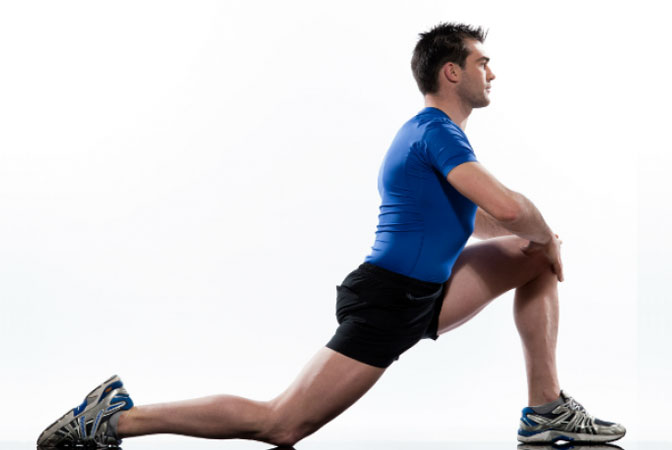
Reducing tension in the tight muscles of the hip can help to alleviate anterior pelvic tilt by restoring balance between the hips and glutes. It’s easy to perform and takes up very little time. Don’t work past the point of ‘tension’ when stretching or you’ll risk injury.
- Get in a ‘hurdle’ stance. Your left leg should be out in front of you with your foot flat and your ankle directly under your knee. Your right knee is behind you, in contact with the floor (rest on a towel if uncomfortable).
- Move your pelvis forward while keeping your chest up. Lean forward until you feel a mild discomfort (stretch) in the top of your right hip.
- Hold that position while breathing naturally for 10-20 seconds.
- Repeat 3-5 times with 30 seconds rest in-between reps.
- Change legs and repeat.
Alternatives: Quad stretch, couch stretch, runner’s stretch, deep squat adductor stretch
#2. Hip Thrusts

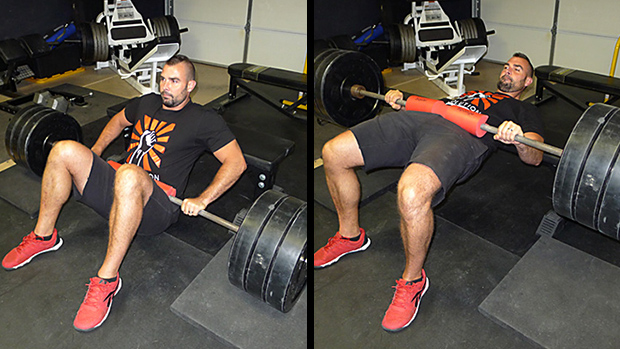
An effective ‘how to fix anterior pelvic tilt’ plan isn’t just about stretching. It’s also about strengthening weak muscles that haven’t got the ability to pull your pelvis into position.
If you’ve got access to a gym (were guessing you have if you’re a SpotMeBro reader) you can strengthen the glutes with hip thrusts. Okay, this very much twerk-like is a strange one. But if you want to improve your posture (and get better in bed at the same time) it’s a priority.
- Arrange your upper back on a bench and place a barbell across your hips (tuck your little dude out of the way too or it’ll get in the way).
- With your feet at shoulder-width apart and your knees bent, push through your heels and extend you hips. Focus on the glutes doing the work.
- At the top of the movement your hips should be extended (but don’t hyperextend your lower back), your shins should be vertical and your upper body should face the ceiling. You should be looking forward and not up.
- Pinch your glutes together and then return to the start position under control
- Aim for 3-4 sets of 8-15 reps.
Alternatives: Glute bridges, single leg hip thrusts
#3.RKC Plank
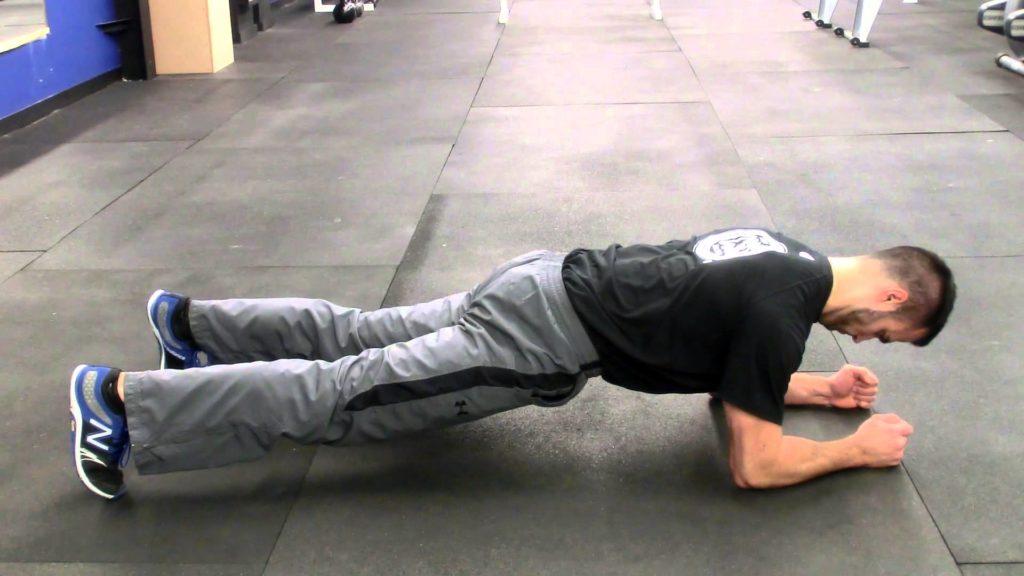
This variation on a standard plank position emphasizes the position of the hips and teaches you to control posture statically.
- Get in a standard plank position with your forearms and feet in contact with the floor.
- Pull your shoulder blades together and tense your glutes and quads to increase tension through your core.
- At the same time, drive your elbows into the ground as though you were trying to perform an upside-down ab crunch.
- Relax your breathing and hold that position for 3-5 sets of 30 seconds. Rest no longer than 1 minute between sets.
Alternatives: Traditional plank, TRX plank, RKC plank on knees
#4. Posterior Pelvic Tilt
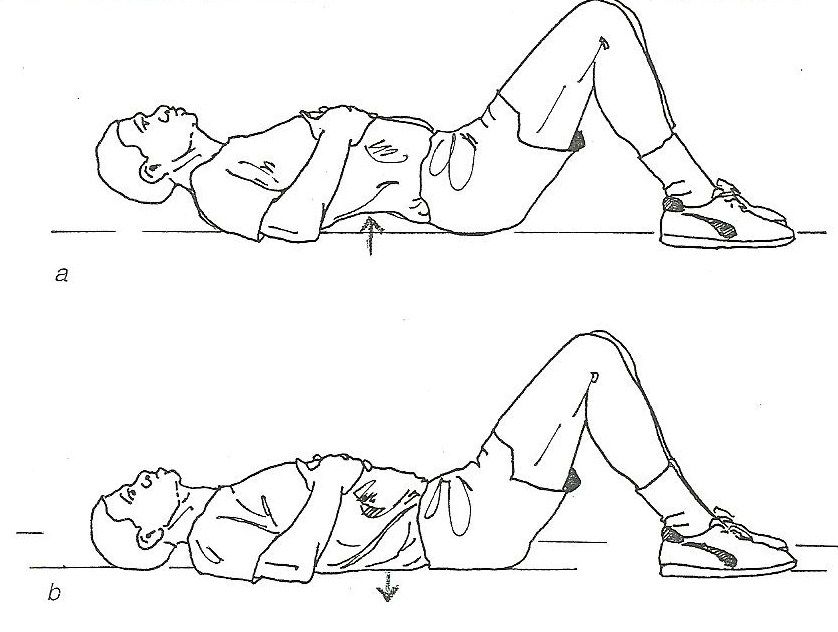
This is the simplest exercise you’ll ever do. It’s like an unweighted partial range of motion hip thrust. But the focus is on small movements of the glutes… just don’t make eye contact with anyone at the gym while you do it.
- Lie on the floor with your feet flat and shoulders/ butt in contact with the floor
- Squeeze your glutes, tilt the pelvis back and flatten your lower back into the floor
- Return to the start position
- Shoot for 5 x 20 reps and work up from there
Mind to muscle connection is important bro. So imagine that hot model with the big tits from your gym is sat on your dick. that’ll get those glutes working in no time.



